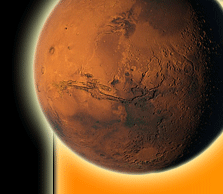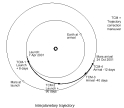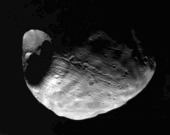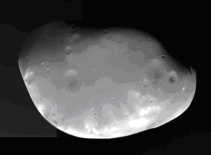






Traveling to Mars isn't an easy task. There are several things we should first pay attention to and than do the real travel. We should know where to start from, when to start, at what speed (what kind of rocket and how much fuel) and we should also calculate the travel time and the exact time and place of arriving.
Start
 The best time to begin a travel to Mars is when Mars is most close to Earth. This is actually the period of Mars opposition. A Mars opposition is available about every two years. However, to understand the exact date and time of the opposition we must make some calculations. The difference is caused by the fact that a Martian year is about 687 Earth days and that the ecliptic of the two planets isn't quite the same.
The best time to begin a travel to Mars is when Mars is most close to Earth. This is actually the period of Mars opposition. A Mars opposition is available about every two years. However, to understand the exact date and time of the opposition we must make some calculations. The difference is caused by the fact that a Martian year is about 687 Earth days and that the ecliptic of the two planets isn't quite the same.The place to start from isn't quite important and does not require any specific calculations. Economically it will be better to departure from the equator. It's known that the Earth revolves on its axis faster at the Equator then at the poles. In this way the natural rotation of the Earth helps rockets to detach much easily from the Earth's gravitation which actually requires less fuel.
Let's take a look at the speed. Basically, if you go to the official website of NASA, you can see that an average rocket travels at 25,000 miles per hour and would take 2.5 months to get to Mars. Looking deeper in these calculations and reading more you can easily notice the catch - the NASA site is actually kind of misleading, and didn't take into account the fact that both Mars and Earth are moving as the rocket travels. What they did was assume that Mars and Earth were as close as they can be in their orbits, and that both planets were stationary as the rocket moving at 25,000 mi/hr traveled from Earth to Mars. In this case, if you use distance=velocity x time you can find that it would take about 2.5 months.
But, if you tried to do this in real life, your spaceship would arrive to find that Mars had moved in it's orbit quite a bit, and there would be nothing there to land on! Plus, all bodies in the solar system are subjects to the Sun's gravity and travel in orbits (ellipses, usually), which means that you don't just travel in a straight line from one place to another. So, the catch is that you have to aim for where Mars is actually going to be at the time you expect to arrive, and travel on a portion of an elliptical orbit, and that takes longer.
Usually when people calculate the time for travel to Mars, they consider a special type of orbit, called a Hohman transfers orbit. This orbit is the lowest energy way to get from one planet to another. (Less energy means you don't need as much rocket fuel, which is good.) The time it takes to travel to Mars on this type of orbit is about 8 months, which is where that number comes from. You don't have to travel on this type of orbit - there are lots of possible orbits, but this one requires the least rocket fuel. You can get there faster if you are able to use more fuel and can pick a different orbital path. Also, the exact travel time will change a bit depending on the precise Earth-Mars geometry, and the flight path you take also depends on where on the planet you want to land and what speed you want to be going when you arrive. As far as we can tell, most NASA missions seem to use either a "Type 1 interplanetary trajectory", which is faster (about 7 months) and travels less than 180 degrees around the sun, or a "Type 2 interplanetary trajectory" which travels more than 180 degrees around the sun and takes longer (more like 9 months). You can also look at the orbit diagram for the Mars Odyssey spacecraft.
| Date (UT) | Dist (AU) | Dec |
| 2003 Aug 28 17:58 | 0.3728 | -15° 49' |
| 2005 Nov 07 07:57 | 0.4700 | +15° 54' |
| 2007 Dec 24 19:46 | 0.5929 | +26° 46' |
| 2010 Jan 29 19:42 | 0.6644 | +22° 09' |
| 2012 Mar 03 20:10 | 0.6741 | +10° 16' |
| 2014 Apr 08 21:03 | 0.6209 | -05° 08' |
| 2016 May 22 11:16 | 0.5094 | -21° 39' |
| 2018 Jul 27 05:12 | 0.3862 | -25° 29' |
| 2020 Oct 13 23:25 | 0.4192 | +05° 26' |
| 2022 Dec 08 05:41 | 0.5496 | +24° 59' |
| 2025 Jan 16 02:38 | 0.6437 | +25° 06' |
| 2027 Feb 19 15:50 | 0.6779 | +15° 22' |
| 2029 Mar 25 07:48 | 0.6491 | +01° 04' |
| 2031 May 04 12:03 | 0.5589 | -15° 28' |
| 2033 Jun 28 01:29 | 0.4272 | -27° 49' |
| 2035 Sep 15 19:38 | 0.3817 | -08° 02' |
| 2037 Nov 19 09:09 | 0.4996 | +20° 16' |
| 2040 Jan 02 15:26 | 0.6136 | +26° 41' |
| 2042 Feb 06 12:04 | 0.6719 | +19° 49' |
| 2044 Mar 11 12:50 | 0.6679 | +06° 55' |
| 2046 Apr 17 18:06 | 0.6012 | -08° 59' |
| 2048 Jun 03 14:50 | 0.4797 | -24° 44' |
| 2050 Aug 14 07:50 | 0.3742 | -20° 43' |
Now sit back and get calm. Hold the mouse and keep reading. Our virtual travel to Mars starts from your location, your local longitude/latitude with a command centre - Smolyan, Bulgaria with mission leaders - Martin Tsarev, Peter Slavchev, Plamen Dimitrov and Mariyana Hadzigencheva.
It's quiet. Everything is alright, but it's too quiet. A sharp professional voice from the radio station -
Hohman Transfer
The trajectory used to take a spacecraft from Earth to another body in the solar system. The spacecraft is projected into a solar orbit such that the orbit created intersects the planetary body being visited. Generally, this represents the most energy efficient method of accomplishing the flight. In many cases, gravitational assists of intermediate bodies (the Sun, Moon, or other planets) are also used in a "slingshot" effect.

Travel
Our travel to Mars will take about 6 to 8 months. During this time, passengers are educated a bit about the stars, galaxies, planets and more. One of the greatest views is the Earth seen from the cosmos. The image of our home is incredible. People who saw it keep this image deep in their souls until the end of their lives. Moreover, passengers learn to use space suits and different kinds of tools which will help them live normally and safely on Mars. Usually passengers like the feel of weightlessness, although it is sometimes a bit unhealthy.
Other interesting objects to see during the travel are Mars' moons - Phobos and Deimos.
Moons
Mars has two small natural moons called Phobos and Deimos. They are thought to be captured asteroids. From the surface of Mars, the motions of Phobos and Deimos appear very different from that of our own moon. Speedy Phobos rises in the west, sets in the east, and rises again in just 11 hours, while Deimos, being only just outside synchronous orbit, rises as expected in the east but very slowly. Despite its 30 hour orbit, it takes 2.7 days to set in the west as it slowly falls behind the rotation of Mars, and as long again to rise.
| Natural satellite | Name | Diameter (km/mi) | Mass (kg) | Mean orbital radius | Orbital period (h) | Average moonrise period |
| Mars I | Phobos | 22.2 km (27x21.6x18.8) 13.79 mi (16.7x13.4x11.6) |
1.08x1016 | 9377 km 5827 mi |
7.66 | 11.12 hours |
| Mars II | Deimos | 12.6 km (10x12x16) 7.8 mi (6.2x7.4x9.9) |
2x1015 | 23,460 km 14,540 mi |
30.35 | 5.44 days |
 Phobos
PhobosPhobos is the larger and innermost moon. It is named after Phobos, son of Ares/Mars from Greek Mythology. The fact that Phobos orbits closer to a major planet than any other moon in the solar system is incredible - less than 6000 km above the surface of Mars. Phobos is also one of the smallest known moons in the solar system. Phobos is discovered 1877 August 18 by Hall and photographed by Mariner 9 in 1971, Viking 1 in 1977, and Phobos in 1988.
Phobos is a dark body that appears to be composed of C-type surface materials. It is similar to the C-type (blackish carbonaceous chondrite) asteroids that exist in the outer asteroid belt. Phobos's density is too low to be pure rock, however, and it is probably composed of a mixture of rock and ice.
Phobos orbits Mars below the synchronous orbit radius, meaning that it moves around Mars faster than Mars itself rotates. Therefore it rises in the west, moves comparatively rapidly across the sky (in 4 h 15 min or less) and sets in the east, approximately twice a day (every 11 h 6 min). It is so close to the surface (in a low-inclination equatorial orbit) that it cannot be seen above the horizon from latitudes greater than 70.4°.
 Deimos
DeimosDeimos is the smaller and outermost of Mars' two moons, named after Deimos from Greek Mythology. It is probably an asteroid that was perturbed by Jupiter into an orbit that allowed it to be captured by Mars, though this hypothesis is still in some dispute. Like most bodies of its size, Deimos is highly nonspherical with dimensions of 15?12?10 km.
Deimos is composed of carbon-rich rock, much like C-type (carbonaceous chondrite) asteroids, and ice. It is cratered, but the surface is noticeably smoother than that of Phobos, caused by the partial filling of craters with regolith. The two largest craters, Swift and Voltaire, measure about 3 kilometres across.
As seen from Deimos, Mars would be 1000 times larger and 400 times brighter than the full Moon as seen from Earth, taking up a full 1/11 of the width of a celestial hemisphere.

